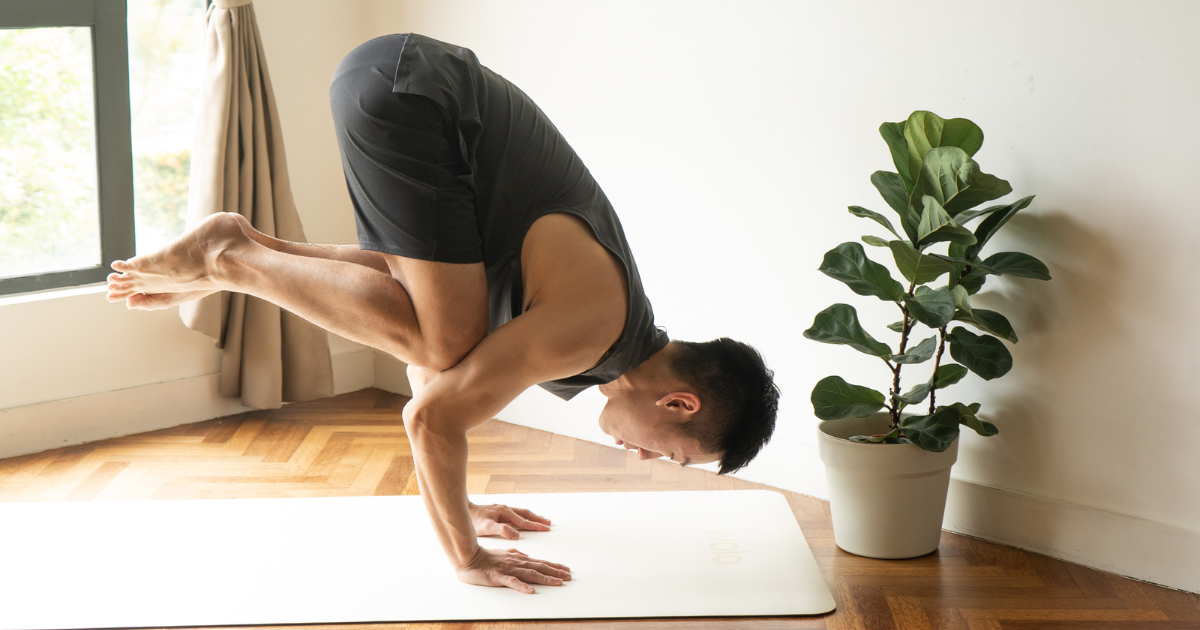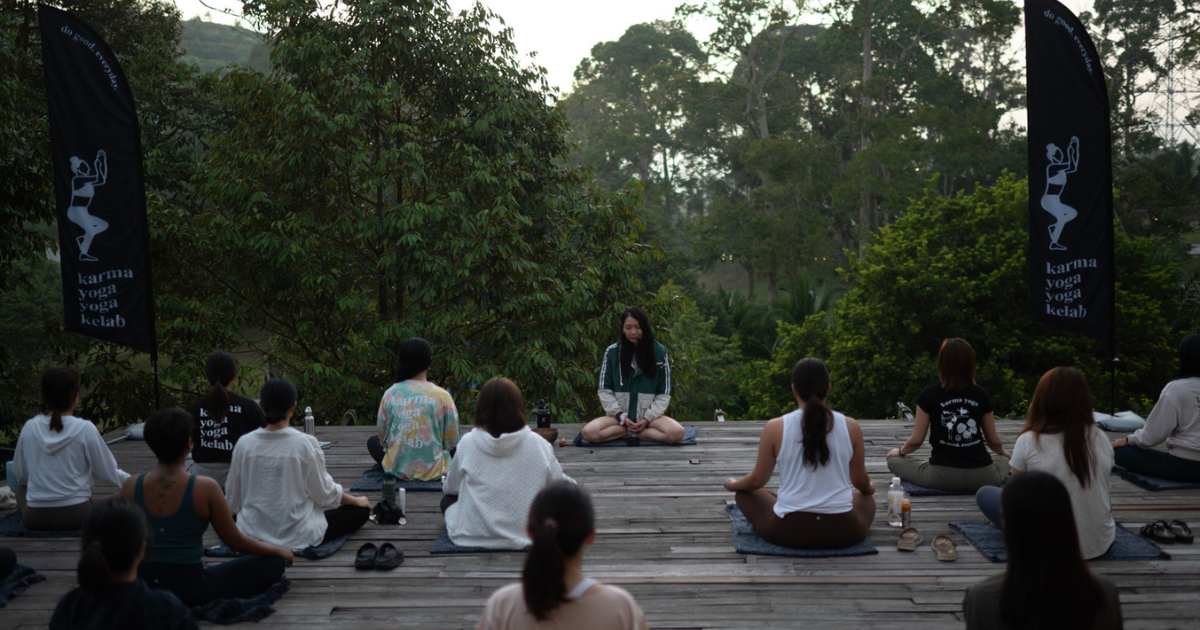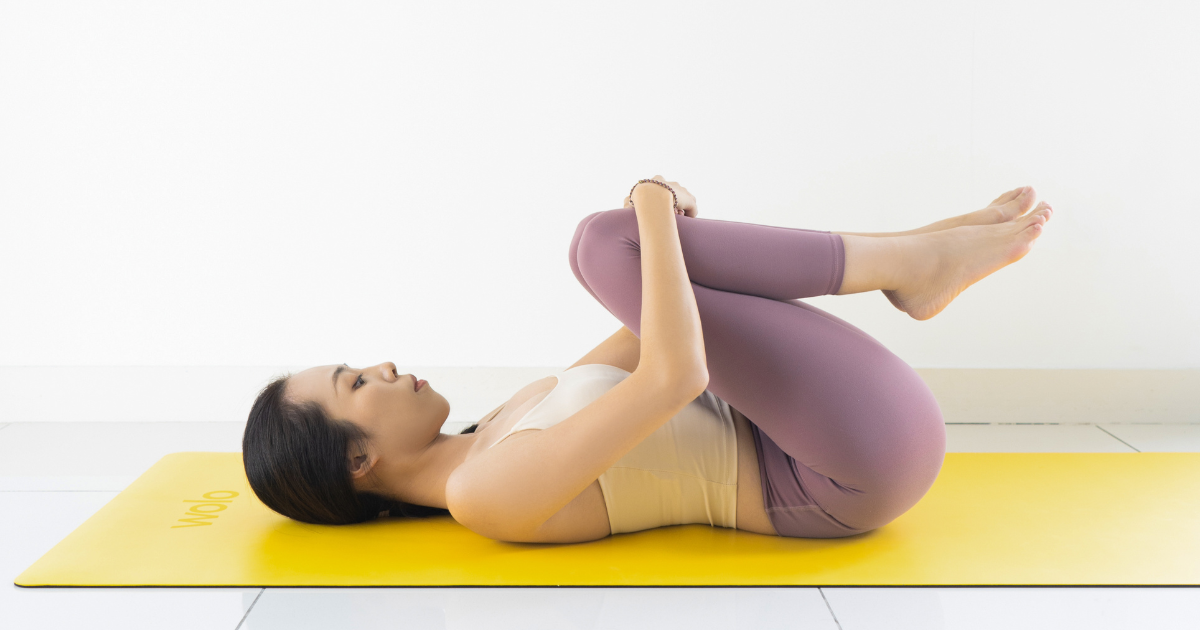The Crow Pose, or Bakasana, is a fundamental yet challenging arm balance that tests and enhances your physical and mental focus.
This guide explores the benefits of Crow Pose, helps you navigate its step-by-step execution and common pitfalls, and prepares you for a successful practice.
Benefits of Crow Pose

Practicing Crow Pose can significantly impact your physical health and mental well-being. Engaging your abdominal muscles during this pose helps in strengthening your core, which is essential for good posture and balance. Besides core strength, this pose also strengthens the wrists, preparing them for more challenging arm balances and handstands.
Another key benefit is the improvement in balance. Crow Pose requires a harmonious blend of focus and strength, which helps in enhancing your overall balance. This not only aids in other yoga practices but also improves coordination and stability in daily activities.
Moreover, the mental benefits are just as profound. Crow Pose challenges you to maintain focus and composure under pressure, fostering a sense of accomplishment and resilience.
This boost in confidence and mental strength is a testament to the holistic benefits of integrating Crow Pose into your yoga practice.
Step-by-step instructions
- Begin by squatting with your knees wide apart, placing your hands on the floor in front of you.
- Spread your fingers wide and press your palms firmly on the yoga mat to ensure stability.
- Next, place the backs of your arms against the inside of your knees and gently lift your hips upward. Your goal is to get the knees as high up onto the backs of your arms as possible, aiming for the armpits if you can.
- Slowly lean forward, shifting your body weight from the tips of your toes to your hands. Keep your gaze forward to maintain alignment and balance.
- As you slowly lean forward, lift your feet off the ground, bringing your heels toward your buttocks. Your arms should now fully support your body weight.
- Engage your core muscles and draw your shoulder blades together to maintain stability.
- Take a deep breath and hold the pose for a few seconds, focusing on your balance.
- To dismount, gently lower your feet back to the ground, returning to a squat position.
- Breathe steadily throughout the pose, as this helps maintain focus and balance.
Common mistakes
A common mistake in Crow Pose is letting the elbows splay out to the sides, which can reduce the engagement of the core muscles and compromise stability. It's crucial to keep the elbows aligned over the wrists, creating a strong base for the pose.
Another frequent error is not engaging the core muscles sufficiently. A strong core is vital for lifting and maintaining the body in the pose. Without proper engagement, holding the balance becomes significantly more challenging, and the risk of falling increases.
What and how to prepare
Preparation for Crow Pose starts with strengthening your core muscles, wrists, and arms. Engaging in exercises that build these areas can provide a solid foundation for your practice. Additionally, practicing poses that enhance your balance and flexibility, such as the plank pose and garland pose, can be incredibly beneficial.
It's also helpful to mentally prepare for Crow Pose. Visualization techniques and practicing in a calm, focused environment can improve your concentration and confidence. Remember, patience and consistent practice are key to mastering this pose.
Variations and modifications
If you're new to Crow Pose or looking to deepen your practice, there are several variations and modifications to explore. For those seeking to challenge their core strength further, transitioning from Crow to Crane Pose, where the arms are straight, can be a goal.
Crow Pose with yoga blocks

Yoga blocks can be a great aid for those struggling with tight hips in Crow Pose. By placing a block under your feet, you can elevate your starting position, making it easier to lift off into the pose. This modification is particularly helpful for beginners or those working on improving their flexibility in hatha yoga.
Additionally, practicing Crow Pose with blocks can help you better understand the pose's mechanics, allowing for a smoother transition into balancing without the blocks. Remember, the goal is to use the blocks as a stepping stone toward the full expression of the pose.
Baby Crow Pose

Image source: doyou
Baby Crow Pose is a playful yet challenging variation that focuses on the balance between the arms and knees. This pose requires a delicate shift of weight forward while maintaining a strong core engagement to keep the body lifted.
As a precursor to more advanced poses, Baby Crow offers practitioners the opportunity to refine their alignment and balance in a compact form. It's an excellent way to build confidence and strength for those new to arm balances.
Side Crow Pose

Side Crow Pose adds a twist to the traditional Crow Pose, challenging your balance and core strength from a different angle. By rotating the torso and balancing on one arm, this variation intensifies the engagement of the oblique muscles, offering a comprehensive core workout.
This pose not only enhances physical strength but also encourages mental focus and determination. It's a testament to the versatility of Crow Pose and its variations, each offering unique benefits and challenges.
Pendant Pose

Image source: Fitsri
Pendant Pose, or Lolasana, evolves from the basics of Crow Pose but introduces an element of dynamic strength and lift.
This pose serves as a bridge between the foundational strength required for Crow Pose and the more advanced arm balances in yoga. It emphasizes the importance of pose basics while inviting practitioners to explore their limits and capabilities in new and challenging ways.
Beginning in a seated position, the hands are placed on the floor beside the hips, similar to the setup for Chaturanga Dandasana. The challenge is to lift the body off the ground, engaging the core and arms in a powerful act of balance.
Crane Pose

Crane Pose, or Bakasana with straight arms, is considered a more advanced variation of Crow Pose. It demands greater arm strength and balance, challenging practitioners to push their limits further.
By extending the arms, the pose engages the shoulder and arm muscles, building strength in these areas. This variation is ideal for those looking to advance their practice and explore the full spectrum of arm balances and yoga poses.
Risks and precautions
While Crow Pose offers numerous benefits, it's important to approach it with caution, especially if you have existing wrist or shoulder injuries. The pose places significant pressure on these areas, and practicing without proper alignment or preparation can exacerbate injuries.
Individuals with carpal tunnel syndrome should be particularly cautious and may want to avoid this pose altogether. Always listen to your body and consult with a healthcare provider if you have concerns about performing this or any yoga pose.
Frequently asked questions
What is the Crow Pose good for?
The Crow Pose is a powerful exercise for building wrist, arm, and core strength. It also improves your balance and focus. By practicing this pose, you can increase your mental and physical endurance. It's not just about strength, though. The Crow Pose can also help you develop a deeper sense of body awareness and control, which is beneficial for all areas of life.
Can beginners do Crow Pose?
Yes, beginners can definitely try the Crow Pose, but it may take some time and practice to get it right. For added safety, starting with a folded blanket on the floor can be helpful. This way, you have a soft landing if you lose balance.
Begin by mastering the basic techniques and gradually work your way up. Remember, it's not about rushing into it but building the strength and balance needed for the pose.
Why can't I balance in Crow Pose?
Struggling to balance in the Crow Pose is common, especially for beginners. The key reasons might include a lack of core strength, not distributing your weight correctly, or not engaging your arms fully.
Focus on building your core muscles and practice distributing your weight forward, allowing your hips to lift naturally. Remember, balance in the Crow Pose comes with time and practice, so be patient with yourself.
How long should you stay in Crow Pose?
When you're just starting with Crow Pose, aim to hold it for a few seconds. As you practice more and become comfortable with the pose, you can gradually increase the time. Eventually, holding the pose for up to a minute is an excellent target. Listen to your body, though, and come out of the pose if you feel any strain or discomfort.
Who shouldn't do Crow Pose?
Not everyone should attempt Crow Pose. If you have wrist or shoulder injuries, it's best to avoid this pose since it puts a lot of pressure on your upper body.
Pregnant women should also steer clear of Crow Pose, especially in the later stages of pregnancy, due to the risk of falling. Always consult with a healthcare provider if you're unsure whether crow pose is safe for you.
Practice Crow Pose with consistency
To truly master Crow Pose, it is crucial to make it a regular part of your yoga practice. Remember, the secret to holding the Crow Pose lies in how you distribute your weight across your palms and the backs of your upper arms.
Focus on lifting your heels and squeezing your knees against the outside of your arms. This action not only helps stabilize your body but also raises your heels and buttocks, making balance easier to maintain.
Consistency in these efforts, combined with regular practice, will significantly improve your strength and balance, allowing you to hold the pose for longer periods.





